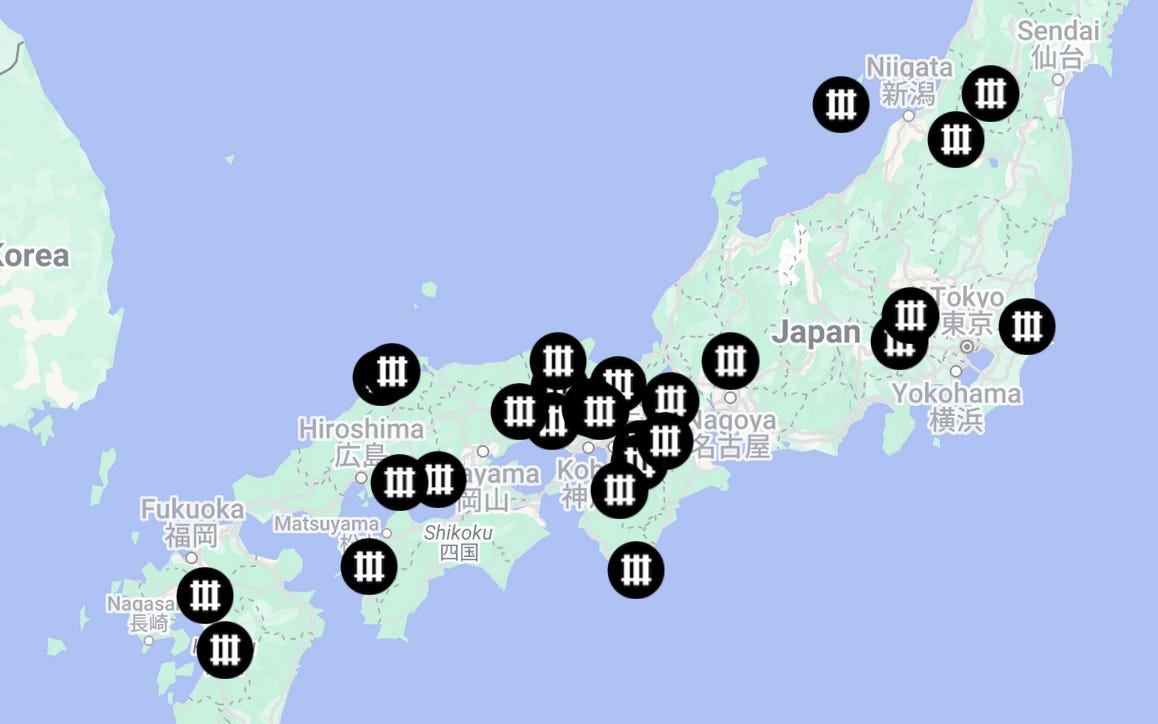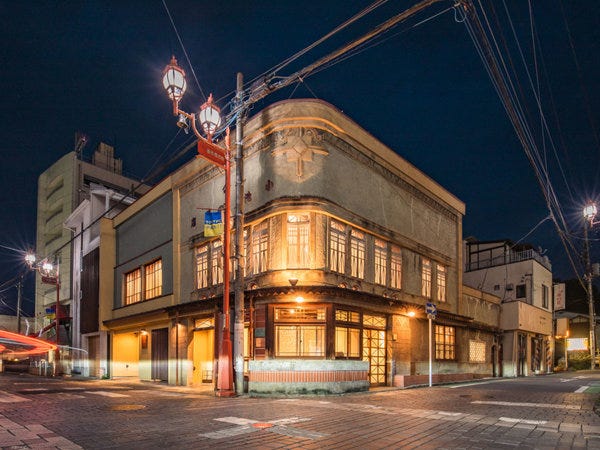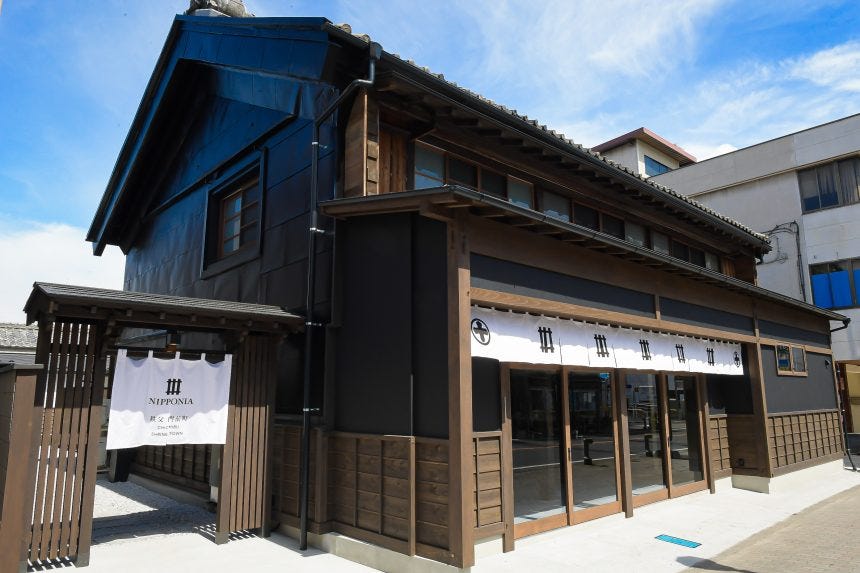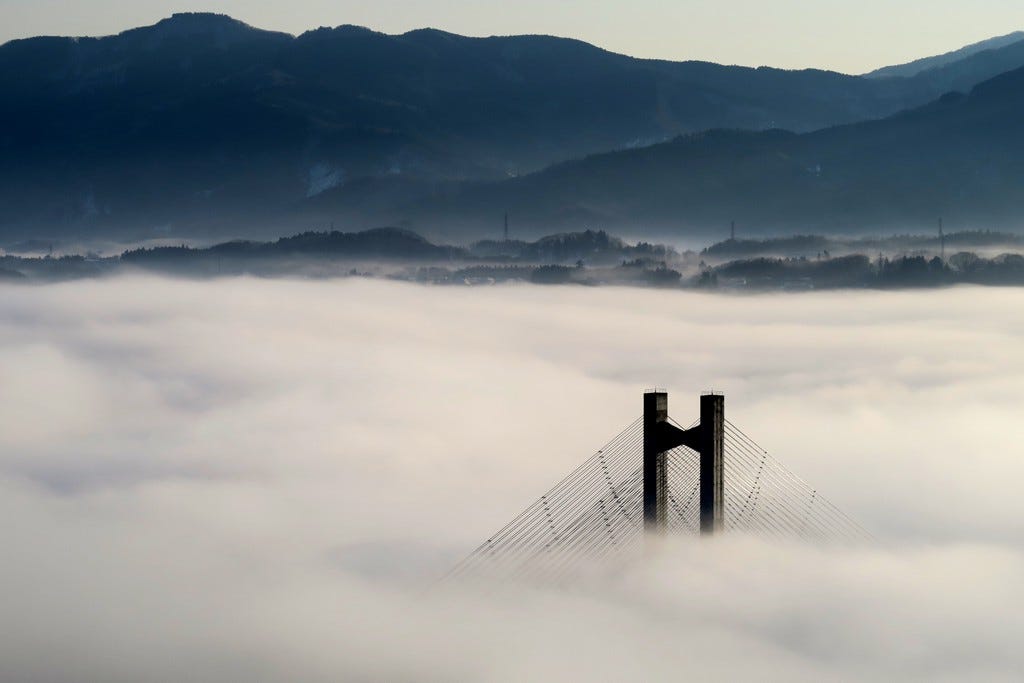Japan has plenty of historic buildings, but not all of them survive. As lifestyles change and cities expand, many once-thriving structures are abandoned, left to decay, or simply torn down and replaced with generic buildings. Even if a building is registered as a Tangible Cultural Property, it can still be altered or demolished as long as the owner notifies the authorities (more on cultural property and heritage here!).
From the moment I read about Nipponia, I knew I wanted to stay in one of their properties. Nipponia is not just a boutique hotel chain ^ in a country where so much is demolished and so little is renovated and/or restored, bringing old buildings back to life and reconnecting them with their communities is a remarkable endeavour. So for me, staying at one of their properties wasn’t just about having a place to sleep; it was a chance to experience a building’s history while still enjoying modern comforts and (yes, this sounds very cheesy) connecting with the local community.
Check out Nipponia’s Google map.
I Guess Nipponia Is Different
Each Nipponia location has its own charm, but what really makes them special is how they bring history back to life. Nipponia don’t just renovate- they restore, keeping the original character of the buildings while making them comfortable to stay in (yes, there was insulation!). That means you could find yourself spending the night in an old sake brewery, a merchant’s house, or a traditional machiya townhouse.
At the time of writing, I understand they have 31 locations across Japan, mostly in quiet countryside towns, with a few in or near historic cities. Nipponia takes the idea of a getaway quite seriously - there are no TVs, and no clocks - which means you get the chance to slow down and soak in your surroundings. Honestly, if I had the money, I’d spend a month in one of them just writing. If you want to write, Nipponia is a far better investment than staying in a serviced apartment like the Hyatt House Tokyo Shibuya (another place I cannot afford).
What really sets Nipponia apart is its connection to the communities around them. Local artisans, farmers, and business owners are all part of the experience, making a stay there feel like more than just a night away. I’ll explain below when I tell you about my stay at their Chichibu property.
A Few Nipponia Destinations to Put on Your List
If you’re in Japan (or planning to visit) and want something off the usual Tokyo-Kyoto-Osaka route, here are a few:
Naramachi, Nara – A 150-year-old sake brewery turned hotel. (11 min from Nara Station)
Tamba-Sasayama, Hyogo – A "dispersed hotel," where several historic buildings in the town serve as rooms. (2 hours by bus and train from Kyoto or Kobe)
Takehara, Hiroshima – An Edo-era town known for its salt-making history. (1 hour by bus, 1h 45 min by train from Hiroshima Station)
Iga, Mie – The “birthplace of the ninja”, where you can stay in a 150-year-old house. (about 2 hours by bus/train from Nagoya or Kyoto)
Sawara, Chiba – A well-preserved Edo-period merchant town. (2 hours by bus from Tokyo Station)
Credit: Nipponia (one of the Chichibu properties)
My Stay at Nipponia Chichibu Monzenmachi
Thanks to a hotel voucher from two dear relatives, I recently had the chance to stay at the Nipponia Chichibu Monzenmachi. Out of all the locations, I chose this one simply because it is easy to get to from Tokyo - just two hours by train from Ikebukuro. I took the day off, left Tokyo after lunch, and met my friend later in the afternoon. My friend M is an architect, raised in a town close-ish to Chichibu, and in the past, I’ve stayed with her at the Okura Hotel (before it was renovated), where she explained all the architectural details. Every once in a while, we just visit a building to marvel at it.
Chichibu has a fascinating past that I had never really been aware of. It used to be a major silk-weaving centre from the Edo to Meiji periods, thanks to its mountain climate - hot days and cool nights are apparently perfect conditions for silkworm farming. Even as industries shifted (these days, cement is big there), Chichibu has held onto its history, and many of the buildings from the silkworm farming days (Taishō- and early Shōwa-era) still stand.
Nipponia has restored some of them beautifully. The mix of Taishō Roman, Shōwa-era nostalgia, and modern comfort makes it feel both historic and cosy.
I only stayed in one of these buildings, but it kind of felt like stepping into a story. Every detail seemed intentional, and there was this rare mix of nostalgia and quiet luxury that made the whole experience special.
Credit: Nipponia
One of the highlights of the stay was breakfast at the hotel restaurant. Everything was locally sourced, it felt like an introduction to the region itself. The hotel’s arrangement with the Highlander Inn Chichibu turned out a nice surprise: Flashing our room key got us a wee dram from Nipponia’s private bottle. Of course, we didn’t just down the dram and leave. We sat down, ordered some nibbles too, and ended up chatting with the people at the table next to us. What started as a quick drink, turned into a proper evening, the kind that makes a place feel less like a stopover and more like somewhere you’d want to come back to.
Exploring Chichibu
Beyond staying at Nipponia’s hotel property, Chichibu itself has plenty to explore:
Chichibu Meisen Museum – Check out to see intricate silk patterns up close and learn about the town’s textile history.
Seasonal Festivals – If you visit at the right time, you might catch one of Chichibu’s famous festivals. The biggest one, Chichibu Matsuri (Dec 2-3), is packed, so you’ll want to book well in advance.
Chichibu Whisky – The local distillery, founded in 2008, has built a serious reputation in Japan’s craft whisky scene. You can’t visit the distillery itself, but many local bars and restaurants serve it. I had a dram at the Highlander Inn Chichibu - highly recommend. And in February, there’s a whisky festival.
Chichibu Muse Park: A short ride from Seibu Chichibu Station followed by a brief walk brings you to the park’s best viewpoints, including the observation deck. On the right day, mist drapes the valley in the early hours of autumn mornings, and the unkai - a sea of clouds - unfolds below like an ever-shifting ocean. The best chances to witness this phenomenon are apparently in November, after a rainy night gives way to a still, clear dawn. We went in February and only learned about it too late, during the day - but I might go back in autumn to try and catch the spectacle. Whether chasing the mist or simply seeking a moment of calm, this quiet corner of Saitama rewards those who take the time to explore.
Credit: Chichibu Muse Park
A Perfect Base for Exploring Chichibu
The property’s central location made it easy to get around. Chichibu Shrine was just a short walk away, and both Chichibu Station and Seibu Chichibu Station were nearby, making access easy.
If you love hiking, the property’s central location makes it very easy to get around. Chichibu Shrine was just a short walk away, and both Chichibu Station and Seibu Chichibu Station were nearby, making access easy.
If you love hiking, this place is even better - you’re surrounded by mountains. But even if you just want a slow, relaxed weekend, Chichibu is the perfect way to experience a historic town without giving up any modern comforts.
M and K, thanks again for the voucher. This was a stay I won’t forget.









Great suggestions!